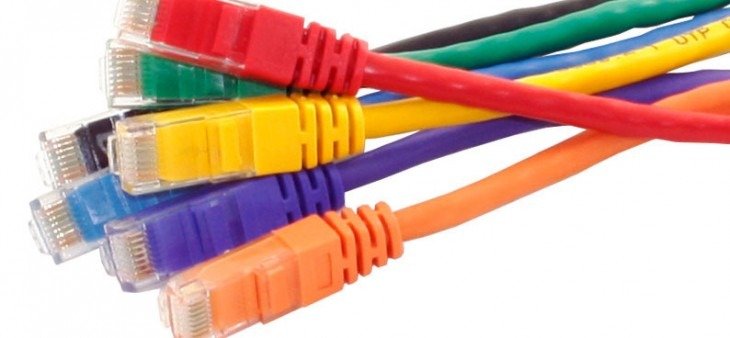
In this article, we break down the differences between CAT5e and CAT6 Ethernet cables to help you make an informed decision and find the best solution for your application. Learn about the key features and benefits of each cable type to determine which one is right for your needs.
Are you looking for the best Ethernet cable to suit your needs? With the constant upgrades to Ethernet cables, choosing the right one can be tricky. In this article, we will compare two of the most popular Ethernet cable types – CAT5e and CAT6 – to help you make an informed decision.
Ethernet or network cables are named depending on their category numbers, it can help you to identify which is which quickly. The most common categories are Cat5, Cat5e and Cat6 – although Cat5 is now mainly being phased out with Cat5e having taken its place as the industry standard. The way the naming works is that the higher the number, the better the performance you can expect from the network cable.
As technology advances, several differences have improved the performance of Ethernet cables. This quick and easy guide from Comms Express outlines the key differences between Cat5, Cat5e and Cat6 cables and how this will help you decide which Network cables you need for your next cabling project.
What is CAT5e Cable?
CAT5e, or Category 5e, is a network cable standard that was ratified in 1999. This cable type offers significant improvements over the older CAT5 standard, including up to 10 times faster speeds and a greater ability to traverse distances without being impacted by crosstalk. CAT5e cables typically consist of 24-gauge twisted pair wires that can support Gigabit networks at segment distances up to 100 m.
What is CAT6 Cable?
CAT6, or Category 6, is a newer Ethernet cable standard that was ratified in 2002. This cable type offers even better performance than CAT5e, with up to twice the bandwidth capacity and improved noise reduction capabilities. CAT6 cables typically consist of 23-gauge twisted pair wires and can support 10 Gigabit Ethernet at segment distances up to 55 m.
CAT5e vs CAT6: Key Differences
The main differences between CAT5e and CAT6 Ethernet cables lie in their bandwidth capacity and noise reduction capabilities. While both cable types can support Gigabit Ethernet, CAT6 offers twice the bandwidth capacity of CAT5e, making it a better choice for applications that require higher data transfer rates. Additionally, CAT6 cables have improved noise reduction capabilities, which can help to reduce interference and improve signal quality.
What Speeds Can You Expect?
Cat5e Cabling Speed – The speed of Cat5e cabling supports high-performance networking. Category 5 enhanced cables can deliver Gigabit Ethernet speeds of up to 1000 Mbps. Devices connected by the cable, including Network switches, routers, and modems, should also support the desired data speeds
Cat5 cables are no longer widely installed as the capabilities of the cables are vastly outperformed by its successors Cat5e and Cat6. A Cat5 cable can transfer data at 10/100 MBPS and this is used to set the standard for network speeds.
It is possible to achieve 100MBPS on a Cat5 cable but only if you use a shorter cable. The maximum cable length for each of the categories is 100m.
Cat6 cable will only be able to achieve 10GBPS if you use a cable length of 55m or under.
When it comes to Cat5e and Cat6 speed, the length of the cable can be just as important as the category of the cable itself.
However, with the increasing demands of internet users from their connections, a Cat6 network is far more effective at delivering a fast internet connection in general. By the point of comparison, a Cat5e cable can achieve 1000MBPS and you can expect a significant improvement in speeds provided you maintain the length of the cables you are using.
How Has The Insulation Improved Cable Performance?
Cat6 cables are more suitable for high-end networking as improved insulation ensures that crosstalk is reduced from a Cat5 or even Cat5e cable. Crosstalk refers to interference between uninsulated cables where the signals are allowed to inhibit each other. In earlier Cat5 and Cat5e cables, the interference is more likely to result in poor user experience and the inability to maintain a practicable connection as a result.
Which One Should You Choose?
When it comes to choosing between CAT5e and CAT6 Ethernet cables, it ultimately depends on your specific needs. If you require higher bandwidth capacity and improved noise reduction capabilities, then CAT6 is the better choice. However, if you only require Gigabit Ethernet and are working with a tight budget, then CAT5e may be the more practical choice. Consider your needs and budget carefully before making a decision.
In conclusion, understanding the differences between CAT5e and CAT6 Ethernet cables is crucial when selecting the right cable for your needs. By taking the time to research and compare these cable types, you can make an informed decision and ensure that your Ethernet network is operating at optimal speeds and performance.
Once you’ve identified the cabling you need for your next project, visit our Express Cable Finder to find out more.
